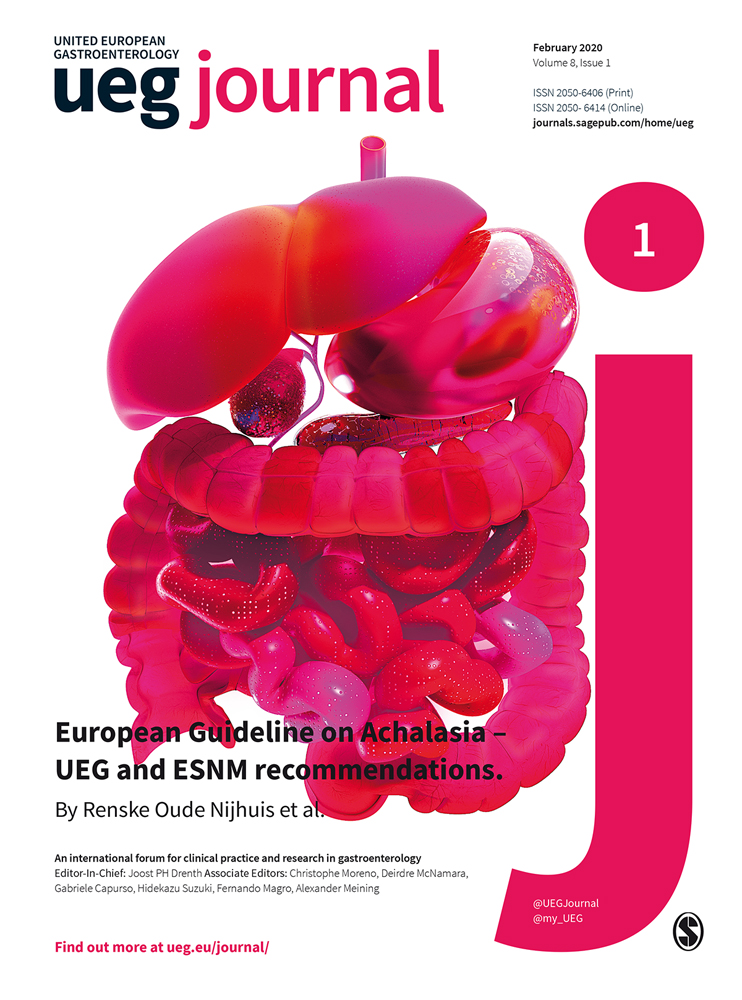Difference in treatment outcomes between clinical trials and “real-life” clinical practice: ustekinumab in ulcerative colitis
Ulcerative colitis (UC) is a chronic condition, with a high burden of morbidity, impaired quality of life and high disability for affected patents.1 Despite major advances in therapeutic armamentarium and strategies, clinicians more frequently face a patient population that has become refractory to all available drugs, including biologics. This challenging category of patients is usually proposed surgery or, alternatively, provided the risk/benefit balance is favourable, to participate in randomised controlled trials (RCTs).
However, up to 30% of “real-life” UC patients are not eligible for RCTs, because of, for example, concomitant topical therapies, age, comorbidity (e.g. history of malignancy, or chronic or recurrent infectious disease), or concomitant dysplasia.2 Moreover, all RCTs with biologics exclude patients with proctitis, although multi-drug refractory, and limit the number of patients recruited who had failed biological therapies.3
In “real-life”, multi-refractory patients are usually the first to receive a new drug, sometimes before it is approved or commercialised, through off-label prescriptions or compassionate programs. This could partially explain the differences in terms of efficacy/effectiveness between RCTs and first observational experiences. On the contrary, in clinical practice, physicians can optimise therapy, prescribe co-medications, modulate corticosteroid tapering according to their own judgement, often leading to higher rates of persistence on therapy and clinical benefit compared with RCTs.
Following the results of the UNIFI phase 3 trial, in which 961 UC patients were enrolled, Ustekinumab has recently received approval from the United States Food and Drug Administration and the European Medicines Agency for the treatment of adult patients with moderate-to-severe active UC.4,5 Among these 961 patients, 51.1% had previously failed at least one anti-TNFα and 17% both any anti-TNFα and Vedolizumab. Among biological failure patients, Ustekinumab induced clinical remission at week 8 in 12.1% (40 of 330 patients randomised to both active arms) compared with 1.2% (2 of 161 patients) treated with placebo (p < 0.001 for both comparisons). Of biological failure week-8 clinical responders randomised into the maintenance phase, 39.6% (36 of 91 patients) treated with 90 mg Ustekinumab every 8 weeks and 22.9% (16 of 70 patients) treated every 12 weeks achieved clinical remission at week 44, compared with 17% of placebo-treated patients (p < 0.001 and p = 0.044, respectively).6
The study by Ochsenkühn et al.7 reports the first “real-life” data on the effectiveness of Ustekinumab for UC patients. Thanks to off-label prescriptions, 19 UC patients, who were refractory or intolerant to all commercialised biologics for UC and had surgery as their only option, received Ustekinumab (intravenous induction at 6 mg/kg, followed by subcutaneous injection of 90 mg every 8 weeks). Based on UNIFI eligibility criteria, a discrete quota of these patients, even if not clearly quantifiable, could not have been enrolled, because of age (range max 81 years), symptomatic remission (16% of patients) or mild endoscopic activity. Moreover, 79% of patients (15 of 19) stopped Vedolizumab “just before” starting Ustekinumab, while a mandatory washout of 8 weeks would have been required among the inclusion criteria in the UNIFI study. Finally, 40% of patients were also on concomitant therapy with golimumab (four patients) and cyclosporine (two patients), and this co-exposure could hypothetically have influenced the effect of Ustekinumab.
After 1 year, 74% (15 of 19) of patients still persisted on therapy: 4 patients stopped for failure and 1 for an adverse event. Clinical remission at 12 months was recorded in 10 patients, in particular 8 from the group with baseline active disease (54.6%) and 2 already in clinical remission at baseline. Notably, all but one of them were also in corticosteroid-free clinical remission, and the same subgroup of patients achieved also mucosal healing. Finally, the safety profile was comparable to that reported in RCT.6
These data are very encouraging but should be interpreted with caution. The overall numbers of patients included in the study is significantly smaller than RCT or previous “real-life” studies on the effect of other biologics in patients with UC,6, 8, 9 precluding any definite conclusions and subgroup analyses (e.g. patients who failed anti-TNFs ± Vedolizumab vs patients who did not tolerate any of these drugs, co-medicated patients vs patients in monotherapy) for predictors of effectiveness.
In conclusion, this first report on the effectiveness of Ustekinumab in UC is the initial step that moves outcomes from clinical trial to clinical practice. Further study is needed in order to (a) assess the effectiveness and safety of Ustekinumab in large “real-life” cohorts; (b) identify predictors of effectiveness; (c) clarify the positioning of Ustekinumab in the line of biological drugs (e.g. bio-naïve or bio-exposed patients); and (d) perform a comparison between Ustekinumab and other biological drugs to better guide our choices.
ORCID iD
Daniela Pugliese https://orcid.org/0000-0001-7930-5402




